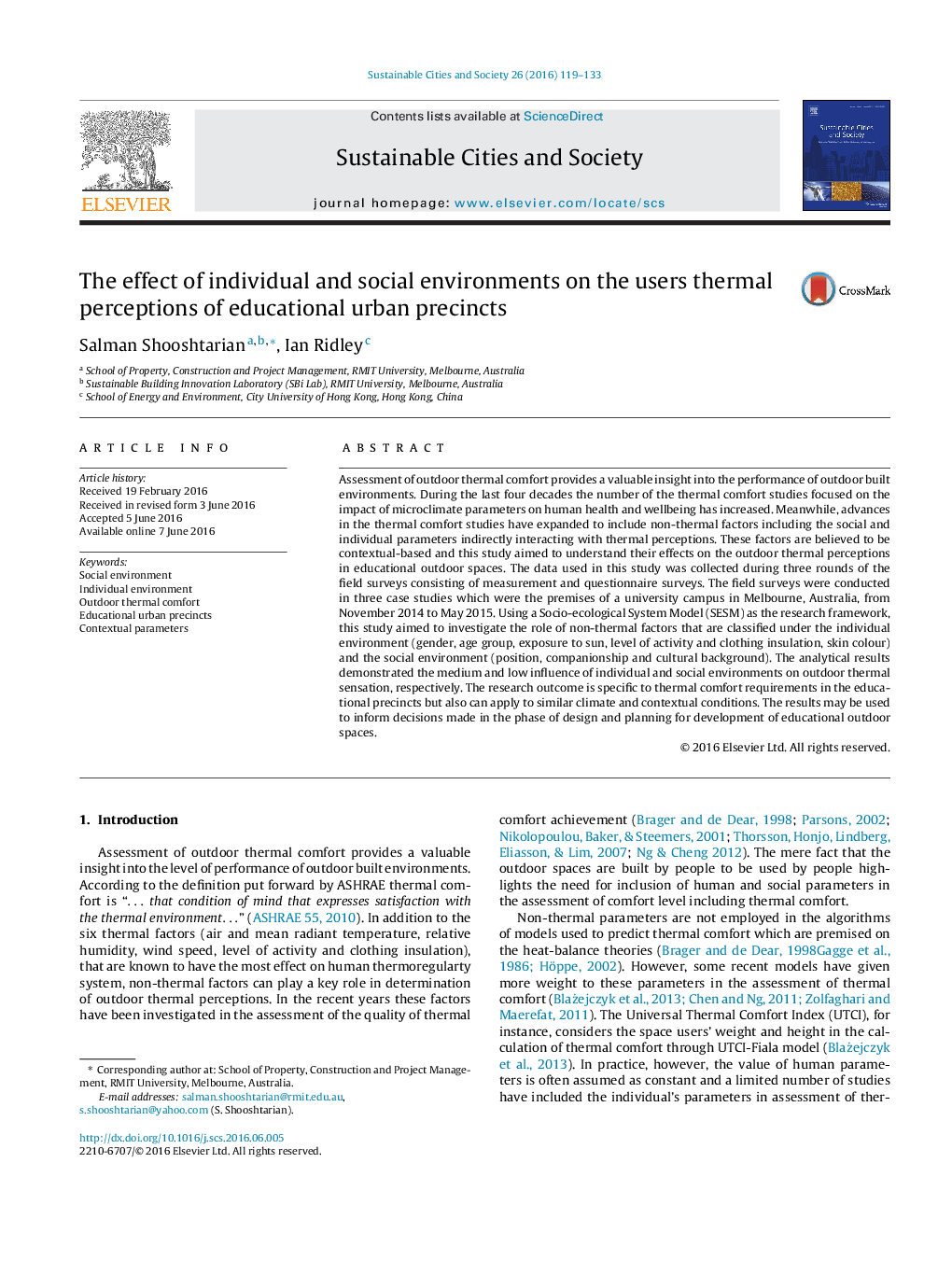| کد مقاله | کد نشریه | سال انتشار | مقاله انگلیسی | نسخه تمام متن |
|---|---|---|---|---|
| 308024 | 513516 | 2016 | 15 صفحه PDF | دانلود رایگان |
Assessment of outdoor thermal comfort provides a valuable insight into the performance of outdoor built environments. During the last four decades the number of the thermal comfort studies focused on the impact of microclimate parameters on human health and wellbeing has increased. Meanwhile, advances in the thermal comfort studies have expanded to include non-thermal factors including the social and individual parameters indirectly interacting with thermal perceptions. These factors are believed to be contextual-based and this study aimed to understand their effects on the outdoor thermal perceptions in educational outdoor spaces. The data used in this study was collected during three rounds of the field surveys consisting of measurement and questionnaire surveys. The field surveys were conducted in three case studies which were the premises of a university campus in Melbourne, Australia, from November 2014 to May 2015. Using a Socio-ecological System Model (SESM) as the research framework, this study aimed to investigate the role of non-thermal factors that are classified under the individual environment (gender, age group, exposure to sun, level of activity and clothing insulation, skin colour) and the social environment (position, companionship and cultural background). The analytical results demonstrated the medium and low influence of individual and social environments on outdoor thermal sensation, respectively. The research outcome is specific to thermal comfort requirements in the educational precincts but also can apply to similar climate and contextual conditions. The results may be used to inform decisions made in the phase of design and planning for development of educational outdoor spaces.
Journal: Sustainable Cities and Society - Volume 26, October 2016, Pages 119–133
